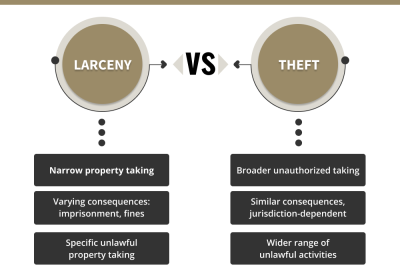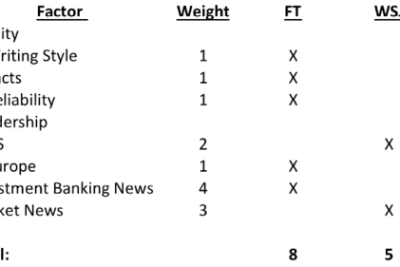
Mastering PEMDAS: A Comprehensive Guide on How to Use PEMDAS in Math

Understanding the Basics of PEMDAS in Mathematics
PEMDAS is an essential acronym in mathematics that helps students and professionals alike remember the order of operations when solving mathematical expressions. The letters stand for Parentheses, Exponents, Multiplication and Division (from left to right), and Addition and Subtraction (from left to right). Understanding this hierarchy is crucial for accurately evaluating expressions and avoiding common mistakes.
1. Parentheses: The first step in PEMDAS involves resolving any operations within parentheses. This means that if you encounter an expression such as (3 + 5), you should calculate that first before addressing the rest of the equation. Parentheses can also include brackets and braces, which serve the same purpose in grouping numbers and operations.
2. Exponents: After handling parentheses, the next step is to calculate any exponents in the expression. Exponents indicate how many times a number (the base) is multiplied by itself. For example, in the expression 2^3, you would evaluate this as 2 * 2 * 2 = 8 before moving on to multiplication or division.
3. Multiplication and Division: Following exponents, multiplication and division are performed from left to right. It’s important to note that these operations are of equal precedence; thus, if an expression includes both, you should work through them in the order they appear. For instance, in the expression 8 ÷ 4 × 2, you would first divide 8 by 4 to get 2, and then multiply that result by 2 to arrive at the final answer of 4.
4. Addition and Subtraction: Finally, the last step of PEMDAS is to perform addition and subtraction, also from left to right. Similar to multiplication and division, these operations are equal in precedence, meaning you handle them in the order they appear. For example, in the expression 5 + 2 - 3, you would first add 5 and 2 to get 7, and then subtract 3 to yield a final result of 4.
By mastering PEMDAS, individuals can ensure clarity and accuracy in their mathematical calculations, making it a fundamental concept in the study of mathematics.
Step-by-Step Guide: How to Apply PEMDAS in Math Problems
Applying PEMDAS is essential for solving math problems correctly. PEMDAS stands for Parentheses, Exponents, Multiplication and Division (from left to right), Addition and Subtraction (from left to right). By following these steps, you can ensure that you approach any mathematical expression systematically and accurately.
Step 1: Identify Parentheses
The first step in applying PEMDAS is to look for any expressions within parentheses. Always solve these expressions first. For example, in the equation 3 + (2 × 5), you would first calculate the value inside the parentheses, which is 10. This step is crucial because it sets the foundation for the rest of the problem.
Step 2: Handle Exponents
Once you’ve resolved any parentheses, the next step is to evaluate any exponents. For instance, in the expression 2^3, you would calculate 2 × 2 × 2, resulting in 8. If your problem includes both parentheses and exponents, ensure that you finish all calculations in parentheses before moving on to the exponents.
Step 3: Perform Multiplication and Division
After dealing with parentheses and exponents, the next step involves multiplication and division. Remember that these operations are treated equally and should be performed from left to right. For example, in the expression 8 ÷ 4 × 2, you would first divide 8 by 4 to get 2, and then multiply by 2 to arrive at the final answer of 4.
Step 4: Complete Addition and Subtraction
Finally, tackle any addition and subtraction from left to right. In the expression 4 + 3 - 2, you would first add 4 and 3 to get 7, then subtract 2 to arrive at the final answer of 5. Following these steps will help you navigate through complex math problems with confidence, ensuring that you always arrive at the correct solution.
Common Mistakes to Avoid When Using PEMDAS
When using PEMDAS (Parentheses, Exponents, Multiplication and Division, Addition and Subtraction), many individuals fall into common traps that can lead to incorrect answers. One frequent mistake is neglecting the order of operations entirely. For instance, some might perform all operations from left to right without considering the hierarchy established by PEMDAS. This oversight can drastically alter the outcome of a mathematical expression.
Another common error involves misinterpreting the multiplication and division steps. Many learners treat multiplication and division as separate entities rather than operations that should be addressed simultaneously from left to right. For example, in the expression 8 ÷ 4 × 2, one should not perform the division first and then the multiplication. Instead, both operations should be executed in the order they appear, yielding the correct result of 4.
Additionally, failing to recognize the importance of parentheses can lead to significant mistakes. Parentheses indicate that the operations contained within them should be completed first, regardless of their position in the expression. For instance, in the equation 3 + (2 × 5), one must calculate the multiplication inside the parentheses before adding, which results in 3 + 10 = 13, rather than mistakenly adding first.
Lastly, it’s crucial to remember that addition and subtraction are also performed from left to right. A common pitfall is to assume that addition always precedes subtraction or vice versa. In an expression like 10 - 3 + 2, you would first subtract 3 from 10 and then add 2, leading to a correct final answer of 9. By recognizing these common mistakes, learners can improve their accuracy and confidence when applying the PEMDAS rule in various mathematical problems.
Real-Life Examples of PEMDAS in Action
Understanding how to apply the PEMDAS rule—Parentheses, Exponents, Multiplication and Division (from left to right), Addition and Subtraction (from left to right)—is essential for solving mathematical expressions accurately. In everyday life, we encounter numerous scenarios where PEMDAS plays a crucial role in ensuring correct calculations.
Budgeting and Finance
When managing a personal budget, applying PEMDAS can help clarify expenses and income. For instance, if you plan to save $500 monthly, but also have an unexpected expense of $200, and you want to calculate your savings after a year, you might express this as:
500 x 12 - 200
Following PEMDAS, you first multiply $500 by 12 to get $6,000, then subtract the $200 expense, resulting in a total savings of $5,800 for the year.
Cooking and Baking
In the kitchen, precise measurements are crucial, especially in baking. If a recipe calls for the following ingredients:
- 2 cups of flour
- 1 cup of sugar
- 1/2 cup of butter
And you want to double the recipe while reducing the sugar by 1/4 cup, the calculation would look like this:
(2 x 2) + (1 x 2 - 0.25) + (0.5 x 2)
Using PEMDAS, you double each ingredient and then subtract the sugar reduction, ensuring the final measurements are accurate for your baking project.
Construction and DIY Projects
In construction or DIY projects, using PEMDAS is vital for calculating areas and material requirements. Suppose you need to find the area of a rectangular garden that is 10 feet long and 5 feet wide, and you want to include a path that is 2 feet wide around it. The area calculation might be expressed as:
(10 + 2) x (5 + 2)
Applying PEMDAS, you first add the width of the path to both dimensions, resulting in 12 feet by 7 feet. The final area calculation yields 84 square feet, which accurately reflects the space needed for both the garden and the surrounding path.
Tips and Tricks for Mastering PEMDAS in Math Calculations
Mastering PEMDAS, which stands for Parentheses, Exponents, Multiplication and Division (from left to right), and Addition and Subtraction (from left to right), is crucial for performing accurate math calculations. Here are some effective tips and tricks to help you become proficient in using this mathematical order of operations.
1. Remember the Acronym
One of the simplest ways to remember the order of operations is to memorize the PEMDAS acronym. Consider creating a catchy phrase or sentence that incorporates the first letter of each operation. For example, "Please Excuse My Dear Aunt Sally" is a popular mnemonic that can help reinforce the order in your mind. Writing this phrase down and referring to it during calculations can provide a helpful reminder when faced with complex expressions.
2. Break Down Complex Problems
When tackling complicated equations, it’s beneficial to break them down into smaller, more manageable parts. Start by identifying any operations that need to be performed within parentheses. Solve these first before moving on to exponents. After that, approach multiplication and division from left to right, followed by addition and subtraction. By taking it step-by-step, you’ll reduce the likelihood of making mistakes.
3. Practice with Real-Life Examples
Applying PEMDAS to real-life scenarios can enhance your understanding and retention of the concept. Try using examples from everyday situations, such as budgeting or cooking, where you need to perform calculations. For instance, if you’re adjusting a recipe, you might need to calculate the total ingredients needed based on the number of servings, incorporating all the operations in the correct order. This practical application can solidify your skills and make learning more engaging.
4. Utilize Online Resources and Games
There are numerous online platforms and educational games designed to help students practice PEMDAS in a fun and interactive way. Websites that offer math quizzes and challenges can provide instant feedback, allowing you to learn from your mistakes. Engaging with these resources can make mastering the order of operations enjoyable and less daunting, ultimately reinforcing your understanding through repetition and varied problem-solving approaches.
Did you find this article helpful? Mastering PEMDAS: A Comprehensive Guide on How to Use PEMDAS in Math See more here General.
Leave a Reply





Related posts